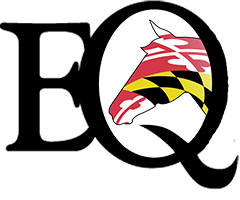What O’Malley did, Hogan moves to undo
In 2013, via his Budget Reconciliation and Financing Act, Governor Martin O’Malley authorized the transfer into the General Fund of $82.7 million in FY 2017 and $86.0 million in FY 2018, taking the funds away from land preservation and recreation programs.
Governor Larry Hogan intends to fix that and to restore the funds to these important land programs.
The Governor’s Fiscal Year 2017 operating budget is Senate Blll 190, cross-filed as House Bill 150, and the Capital Budget is SB191/HB151. The legislation will reduce the authorized transfer amounts in FY 2017 and FY 2018 by $20 million and $40 million respectively, resulting in Program Open Space and other land preservation programs retaining an additional $60 million in transfer tax revenues over the next two fiscal years.
The FY 2017 budget funds land conservation and recreation programs primarily in cash ($5 million in General Obligation Bonds are provided for the Rural Legacy Program according to statute). In addition to funding levels planned for FY 2017 according to last year’s Capital Improvement Program (CIP) and based on updated transfer tax revenue estimates, these programs receive an additional boost of $2 million by reducing the amount that was supposed to have been transferred according to the 2013 BRFA.
Highest State Investment for Chesapeake Bay Trust Fund
This will result in an investment of $53 million for the Chesapeake and Atlantic Coastal Bays Trust Fund and $60 million over two years for land acquisition and preservation programs.
This marks the first time in state history that revenue dedicated for Chesapeake Bay restoration was not diverted to the General Fund. In addition, the governor’s budget blueprint phases out planned financial transfers from land conservation and preservation programs, including Program Open Space.
“Maryland is leading the charge on many of the goals set forth in the Chesapeake Bay Watershed Agreement,” Governor Larry Hogan said. “This dedicated funding for the Trust Fund will enhance our efforts even further, and cement our position as ecological and environmental leaders. Through these commitments, we signal our commitment to the restoration of the Chesapeake Bay and the improvement of our public lands, both locally and statewide.”
The Chesapeake and Atlantic Coastal Bays Trust Fund helps Maryland accelerate bay restoration goals by focusing its resources on the most cost-effective restoration projects. To date, the fund has directed $295 million to more than 1,850 projects aimed at reducing harmful nutrient and sediment runoff into the bay. The budget would provide the highest level of funding for the trust fund since its formation.
Land acquisition, conservation, preservation and recreation programs, such as Program Open Space, are typically funded by the transfer tax and – under previous administrations – have seen significant withdrawals to cover other administrative and legislative priorities. Those withdrawals will lessen under the budget and eventually end under new authorizing legislation.
“I am thrilled that we are restoring funding to our land conservation programs, like Program Open Space and Rural Legacy, as well as fully funding the Chesapeake and Atlantic Coastal Bays Trust Fund, one of the most important tools targeting bay and water quality,” Maryland Department of Natural Resources Secretary Mark Belton said. “These ‘green’ investments – historic in shape, size and significance – will improve the health of local waterways, accelerate land conservation and preservation efforts, and ultimately restore the beauty, health and vitality of the bay.”
There is also a planned boost in FY2018 of an additional $40 million, also by reducing the amount that was planned to be transferred according to the 2013 BRFA.
Highlights include:
- $4.5 million increase in funding Waterway Improvement Capital projects
- $1.7 million increase in state park funding
- $11 million for a new Animal Waste-to-Energy Program, which will help support implementation of Maryland’s Phosphorous Management Tool
- $85 million to address storm water management needs of state highways
- $13.8 million for Program Open Space statewide
- $16.7 million plus an additional $5 million for a total of $21.7 million for local Program Open Space projects
- $7.8 million, plus an additional $4.862 million (plus the $5 million statutory bond amount) for a total of $17.7 million for Rural Legacy
Image credit: Executive Office of the Governor











